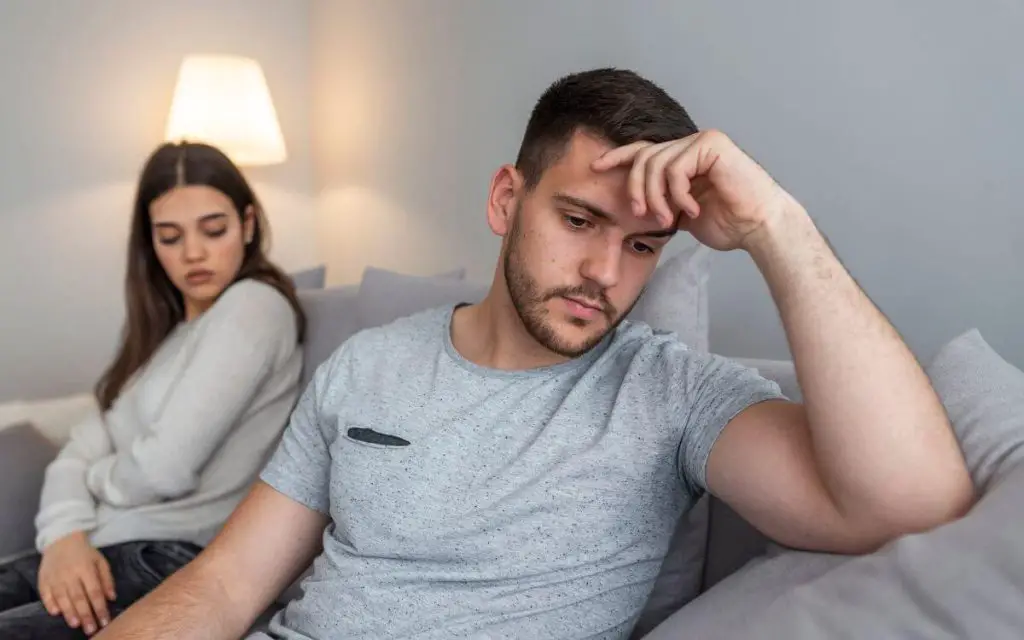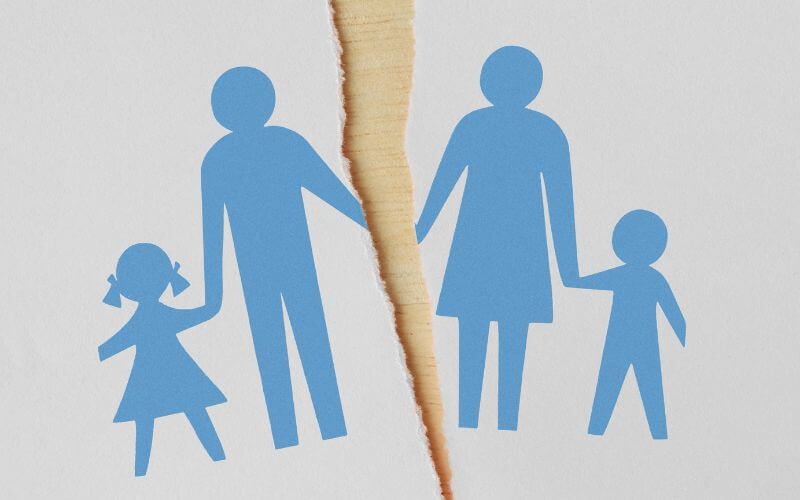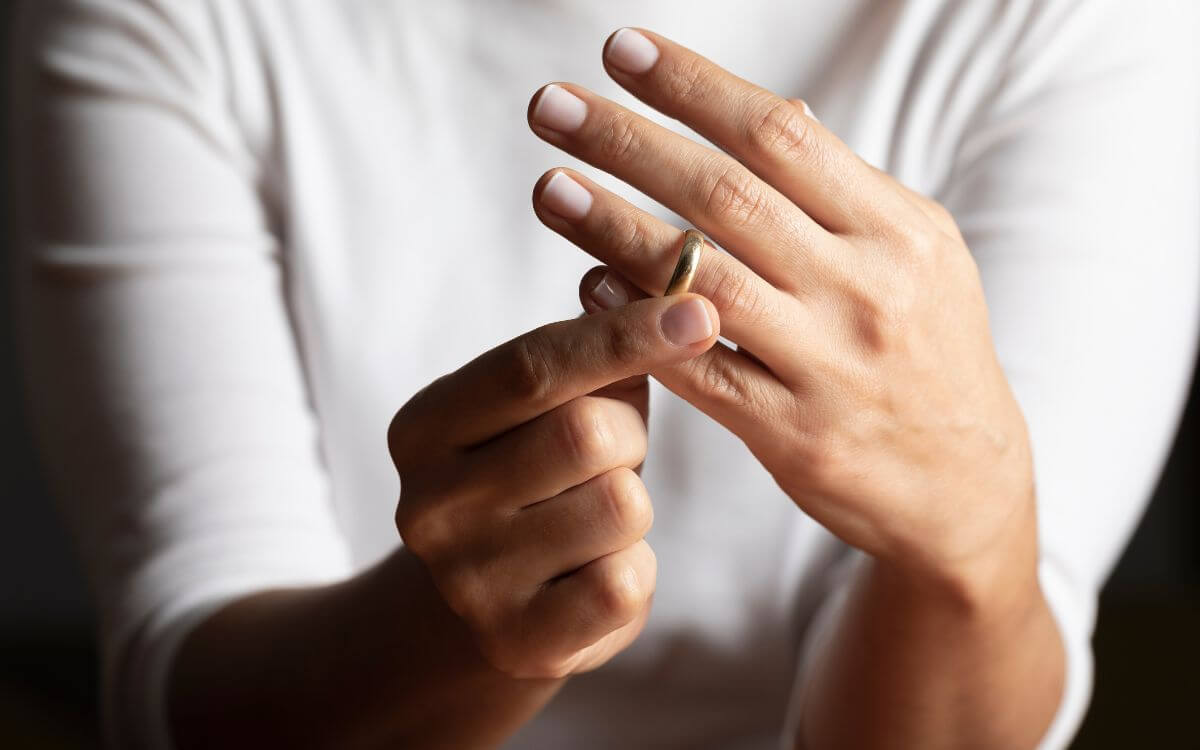Endometriosis and divorce rates.
I’ve been married to a beautiful Italian woman for over a decade, and even though my marriage blossoms today, it never used to be that way. After my lack of knowledge and impatience cause a bit of friction between us, it was the illness that caused my wife her physically, and greatly impacted her mental health. She asked me to divorce her on numerous occasions. This is when I got interested in endometriosis and divorce rates.
Endometriosis is a debilitating condition that affects the reproductive system of women. It is characterized by the growth of endometrial-like tissue outside of the uterus, which can lead to chronic pain, heavy menstrual bleeding, and infertility.
While endometriosis may seem like a purely physical issue, its impact on relationships should not be overlooked. This is why I want to explore the topic of endometriosis divorce rates.
Endometriosis, a debilitating gynecological condition, has an unexpected societal impact – it significantly elevates divorce rates. Studies indicate that couples dealing with endometriosis face a strikingly high divorce rate, estimated to be as much as 75%.
Definition of endometriosis.
Endometriosis is often referred to as an invisible illness because its symptoms are not always visible on the outside. However, this does not mean that endometriosis is any less real or impactful on those who suffer from it.
It can take years for women to receive a proper diagnosis and treatment plan. The severity of endometriosis varies greatly between individuals.
Some women may experience mild discomfort during their menstrual cycle, while others may be bedridden due to excruciating pain. Unfortunately, there is no known cure for endometriosis, and treatment options are limited.
Endometriosis is a chronic gynecological condition where tissue similar to the uterus lining grows outside of the uterus, often on other reproductive organs. This out-of-place tissue can cause severe pain, inflammation, menstrual irregularities, infertility, and other complications. It affects 1 in 10 women of reproductive age.
Early signs of endometriosis.
Endometriosis often presents with symptoms such as painful periods, discomfort during intercourse, and pain with bowel movements or urination, typically during menstruation. Some women also report excessive bleeding and fatigue.
Symptoms of endometriosis.
In addition to early signs, chronic lower back and pelvic pain, diarrhea, constipation, bloating, or nausea, particularly during menstrual periods, can also occur. Some women may experience infertility issues.
Diagnosis of endometriosis.
Diagnosis is typically made through a combination of a pelvic exam, ultrasound, and MRI. Definitive diagnosis is usually achieved through a surgical procedure known as laparoscopy, where a small camera is inserted into the pelvic area to directly visualize and potentially sample endometrial tissue.
Treatment of endometriosis.
Treatment options vary based on the severity of symptoms and a woman’s desire to have children in the future. Hormone therapy can help manage symptoms, and pain medications can be used for relief. Surgical options range from removing endometrial growths to full hysterectomy in severe cases.
Management of endometriosis.
Beyond medical treatment, lifestyle changes can help manage symptoms. Regular exercise, maintaining a healthy diet, and stress management techniques can all play a role in mitigating the impact of endometriosis on daily life. Regular medical follow-ups are also important for managing the condition.

Overview of the impact of endometriosis on relationships.
The impact of endometriosis on relationships cannot be overstated. Chronic pain and fatigue can make it difficult for those with endometriosis to participate in activities they once enjoyed with their partners.
Painful intercourse can create tension in intimate relationships and lead to a loss of intimacy altogether. Infertility is also a major concern for couples affected by endometriosis.
The emotional toll of trying to conceive without success can put a strain on even the strongest relationships. The financial burden of fertility treatments only adds fuel to an already raging fire.
The link between endometriosis and divorce rates.
It should come as no surprise that living with a chronic illness like endometriosis can increase the risk of divorce within a relationship. The physical and emotional toll of endometriosis can lead to feelings of resentment, frustration, and isolation.
Couples may begin to feel like they are no longer on the same page when it comes to their goals and dreams for the future. Endometriosis can also make it difficult for couples to enjoy shared hobbies or interests, leading to a feeling of detachment from one another.
While not every couple affected by endometriosis will go through a divorce, it is important to acknowledge the potential impact that this condition can have on relationships. By raising awareness about endometriosis and its effects on both individuals and couples, we can hopefully begin to break down some of the barriers that prevent open communication and understanding.
The struggle is real!
Endometriosis can severely impact intimacy, causing sexual acts to be painful and hampering emotional connections. The associated infertility can trigger emotional distress and societal stigma, straining relationships further.
Fatigue, another symptom, often misunderstood, leads to conflicts within partnerships. The condition thus poses significant barriers to relationships, necessitating understanding, and open dialogues.
Let’s explore these issues one by one…
A barrier to intimacy.
Let’s not beat around the bush here. Endometriosis can make sex feel like a torture chamber. The pain can be so excruciating that it’s impossible to enjoy the experience, let alone feel intimate with your partner.
And it’s not just during sex that this pain rears its ugly head; foreplay, menstruation, and even bowel movements can all be agonizing experiences for women with endometriosis. As if living with chronic pain wasn’t enough, women with endometriosis often have to deal with partners who don’t understand the extent of their suffering.
Sex is not just an act of physical pleasure but also a form of emotional expression and intimacy. But when your body feels like it’s on fire every time you attempt intimacy, it becomes difficult to connect emotionally with your partner.
A source of emotional turmoil.
Endometriosis doesn’t always lead to infertility, but when it does, it can be devastating for couples who want children. Infertility puts an immense amount of pressure on a relationship and can cause strain in even the strongest partnerships. Women blame themselves for not being able to conceive and men feel helpless watching their partners go through such emotional turmoil.
The worst part?
Society treats infertility as a taboo subject that couples should keep under wraps.
This leaves couples feeling isolated and alone in dealing with their struggles. It’s time we start talking openly about infertility so that couples dealing with endometriosis-related infertility don’t feel ashamed or stigmatized.
A recipe for conflict.
Fatigue is one of the most common symptoms among women living with endometriosis. It’s not just feeling tired after a long day at work; it’s bone-deep exhaustion that leaves you feeling like you’ve been hit by a truck. This level of fatigue can lead to irritability, mood swings, and even depression.
When you’re in a relationship with someone who doesn’t understand what it feels like to be constantly exhausted, it can lead to conflict. Your partner may think you’re being lazy or uninterested in spending time together when, in reality, all you want is to curl up in bed and sleep for days.

Conclusion on endometriosis and divorce rates.
Living with endometriosis is hard enough without having to worry about how it impacts your relationships. Painful intercourse, infertility, fatigue, and mood swings are just a few of the ways that endometriosis can strain even the strongest bonds between couples.
It’s important for couples dealing with endometriosis to communicate openly and honestly about their struggles. Seeking support from outside sources like friends, family members or counseling can help alleviate some of the pressure on your relationship.
We need more research into the impact of endometriosis on relationships so that we can better understand how this condition affects couples. Only then will we be able to provide appropriate support and resources for those who are struggling with this complex disease?
When love is not enough…
Endometriosis is a chronic illness that doesn’t only affect the individual diagnosed with it, but also their partner. Living with endometriosis can be extremely challenging for couples, especially when they do not have the necessary support and tools to cope. However, there are ways to manage the impact of endometriosis on a relationship.
Communication is key!
Effective communication is essential in any relationship, and especially crucial when dealing with chronic illness. Couples must learn to communicate their needs openly and honestly to avoid misunderstandings and conflict.
It’s crucial to create an open dialogue where both partners feel heard, respected, and validated. One communication strategy that has proven effective is active listening.
Active listening involves giving your partner your full attention while they speak and avoiding interrupting or dismissing their concerns. Additionally, using “I” statements instead of “you” statements can help convey feelings without placing blame or causing defensiveness.
The importance of friends and family.
I couldn’t do it alone, I couldn’t help my wife without my mother-in-law. She’s been an angel!
Managing endometriosis as a couple can be overwhelming at times. While partners should support each other throughout the journey, they must also seek help from other sources whenever possible. Support groups for individuals living with endometriosis are excellent resources for finding emotional support and sharing experiences with others who understand what it’s like to live with chronic pain.
Friends and family members can also provide valuable emotional support during difficult times. It’s essential to communicate openly with loved ones about what you’re going through so they can offer practical assistance or simply lend an ear when needed.
Couples counseling as a tool for coping.
When all else fails, couples counseling may be necessary to cope effectively with the challenges that come with endometriosis. A therapist can help couples navigate the emotional and physical challenges of living with endometriosis, equip them with communication strategies, and guide them through making necessary lifestyle changes.
It’s important to note that seeking therapy is not a sign of weakness but rather a courageous step towards creating a stronger, healthier relationship. With the right support and guidance, couples can learn to manage the impact of endometriosis on their relationship effectively.
The endometriosis divorce rate.
Endometriosis is a debilitating disease that affects millions of women worldwide. It causes chronic pain, infertility, and other complications that can severely impact the quality of life for those affected. One of the lesser-known consequences of endometriosis is its impact on relationships.
Studies have shown that couples, where one partner has endometriosis, are more likely to divorce than couples where this condition is not present. This statistic should serve as a wake-up call to society as a whole.
Endometriosis is not just an individual problem; it affects families and communities as well. We need to take action to raise awareness about this condition and its consequences so that we can provide better support to those who are struggling with it.

Final word on endometriosis and divorce rates.
It is clear that endometriosis can have a significant impact on relationships, with divorce rates among couples affected by the condition being higher than average. The debilitating symptoms of endometriosis can create barriers to intimacy and communication, leading to conflict and emotional turmoil.
However, there are ways for couples to cope with the challenges of endometriosis together, such as seeking support outside the relationship and utilizing therapy.
Couples living with endometriosis should communicate effectively using strategies such as active listening and scheduling time for discussion. They should also find support outside their relationship when they need it. Friends or family who understand what they’re going through can be an invaluable resource for coping with this chronic illness.
Therapy may help couples better understand each other’s perspectives about how to cope with endometriosis. Couples counseling sessions could provide a safe space to express themselves without judgment from their partners.
It’s critical that we raise awareness about endometriosis so that people know what it is and how it affects women’s lives beyond just physical pain. We must also recognize its impact on relationships because not only does it affect individuals physically but emotionally too.
By raising awareness about this condition, we have an opportunity to bring empathy into our communities’ conversations about women’s health issues like never before.
When people understand just how many women suffer from this condition every day — and how much harder life can be because of its symptoms — they’re more likely to become invested in finding potential solutions, whether that is through individual support or lobbying efforts for more research funding.
Ultimately, we can work together to raise consciousness about endometriosis so that the people who live with it every day can feel more supported and empowered. With the right resources and understanding, couples living with endometriosis can find ways to cope and thrive despite the challenges.


About Me
Hi, I’m Lucjan! The reason why I decided to create this blog was my beautiful wife, who experienced a lot of pain in life, but also the lack of information about endometriosis and fibromyalgia for men…
